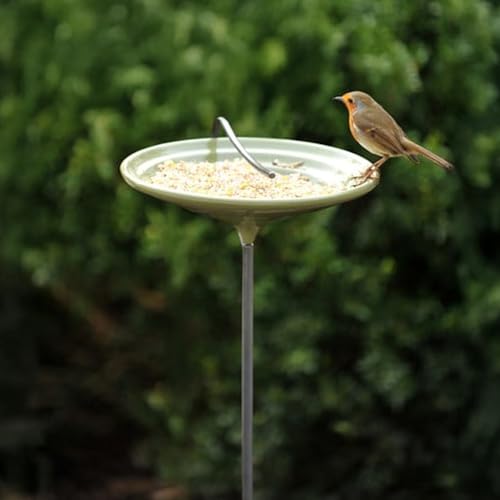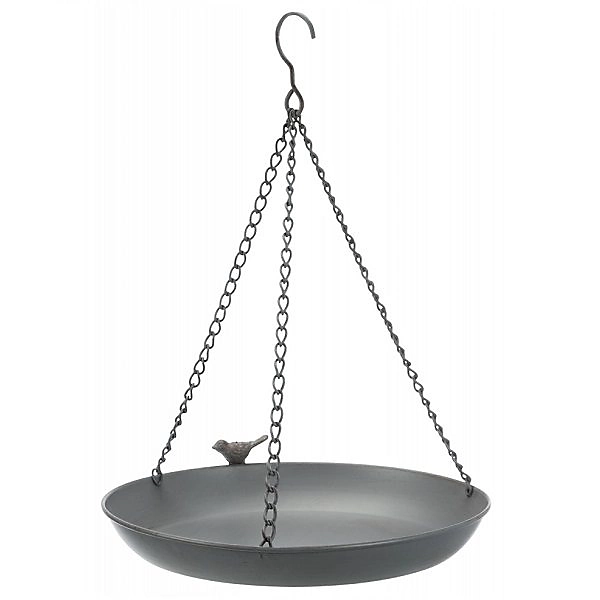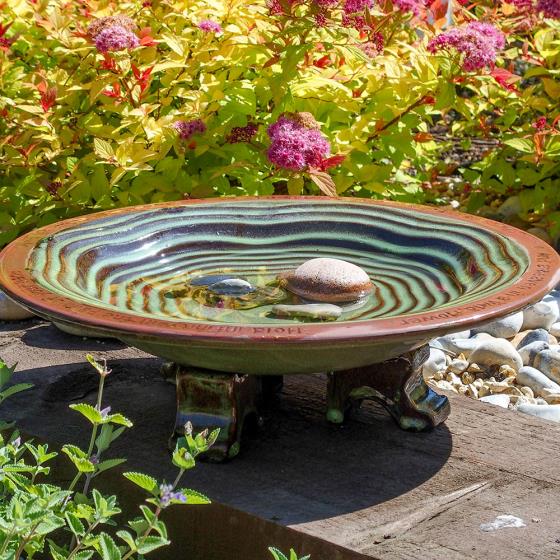5 reasons garden birds aren't visiting your bird bath – and what experts urge you to do to make it more welcoming
A bird bath is a wonderful way to welcome feathered friends to your garden – but only if you do it properly
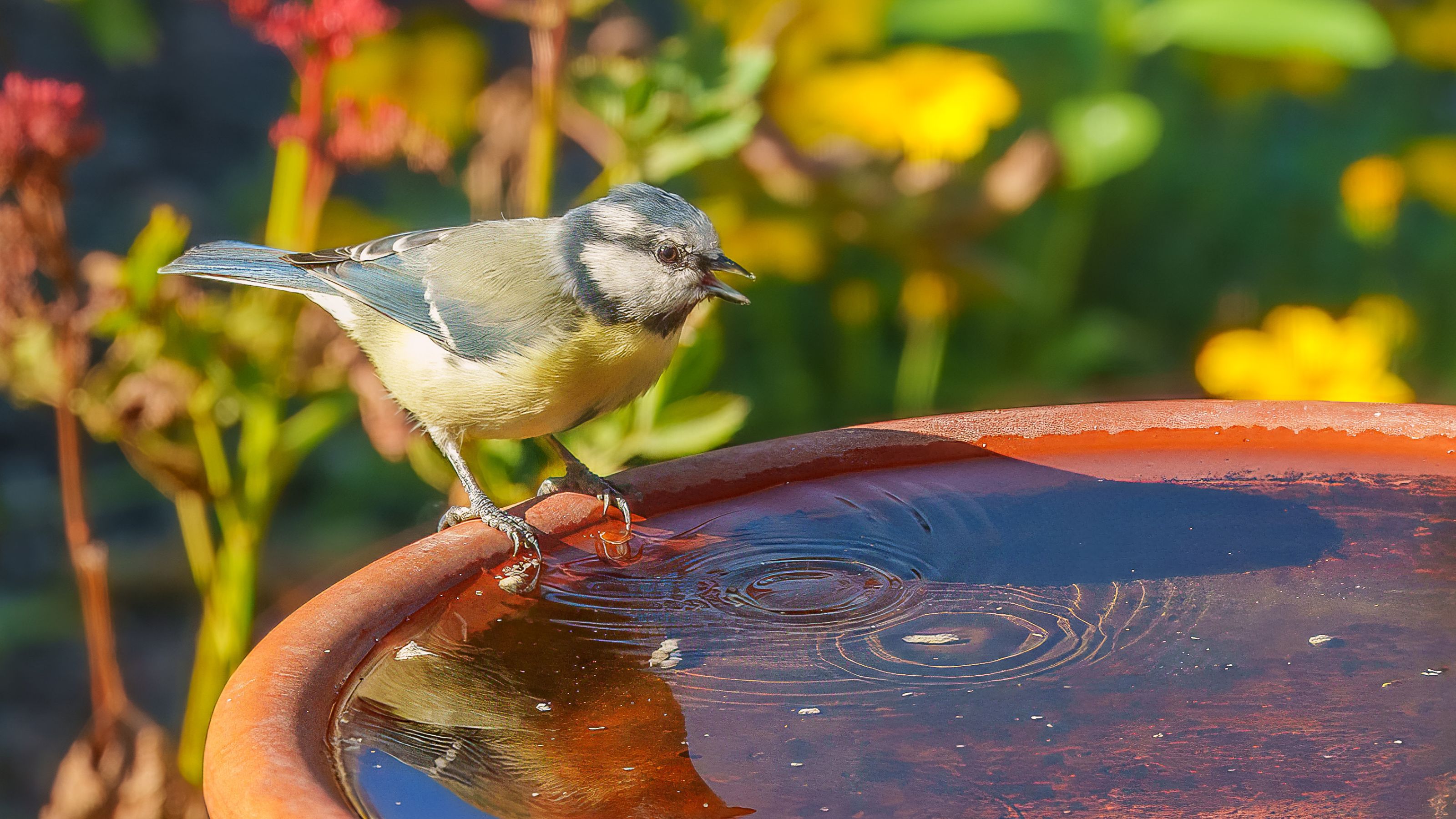

Providing water for our feathered friends is simple, but there are several bird bath mistakes to avoid if you want to attract birds to your garden safely.
Now, it goes without saying that bird baths are one of our favourite wildlife garden ideas: not only do they look beautiful in our backyards, but they offer the perfect spot for birds to splash about and enjoy a much-needed drink (not to mention a chance for us to enjoy their cheery birdsong, too).
Still, if you're going to do it, do it right. There’s really no point installing a bird bath if you don’t follow expert advice and basic guidelines…
Top 5 bird bath mistakes
We're on the cusp of another hot summer, which means it's more important than ever to show our beloved garden birds some love.
Whether you want to attract robins to your garden, swifts and swallows, or (ahem) all of those helpful birds that eat slugs, it's important to make sure your bird bath does its job properly.
To that end, then, here are all the bird bath mistakes to avoid...
1. The water is too deep
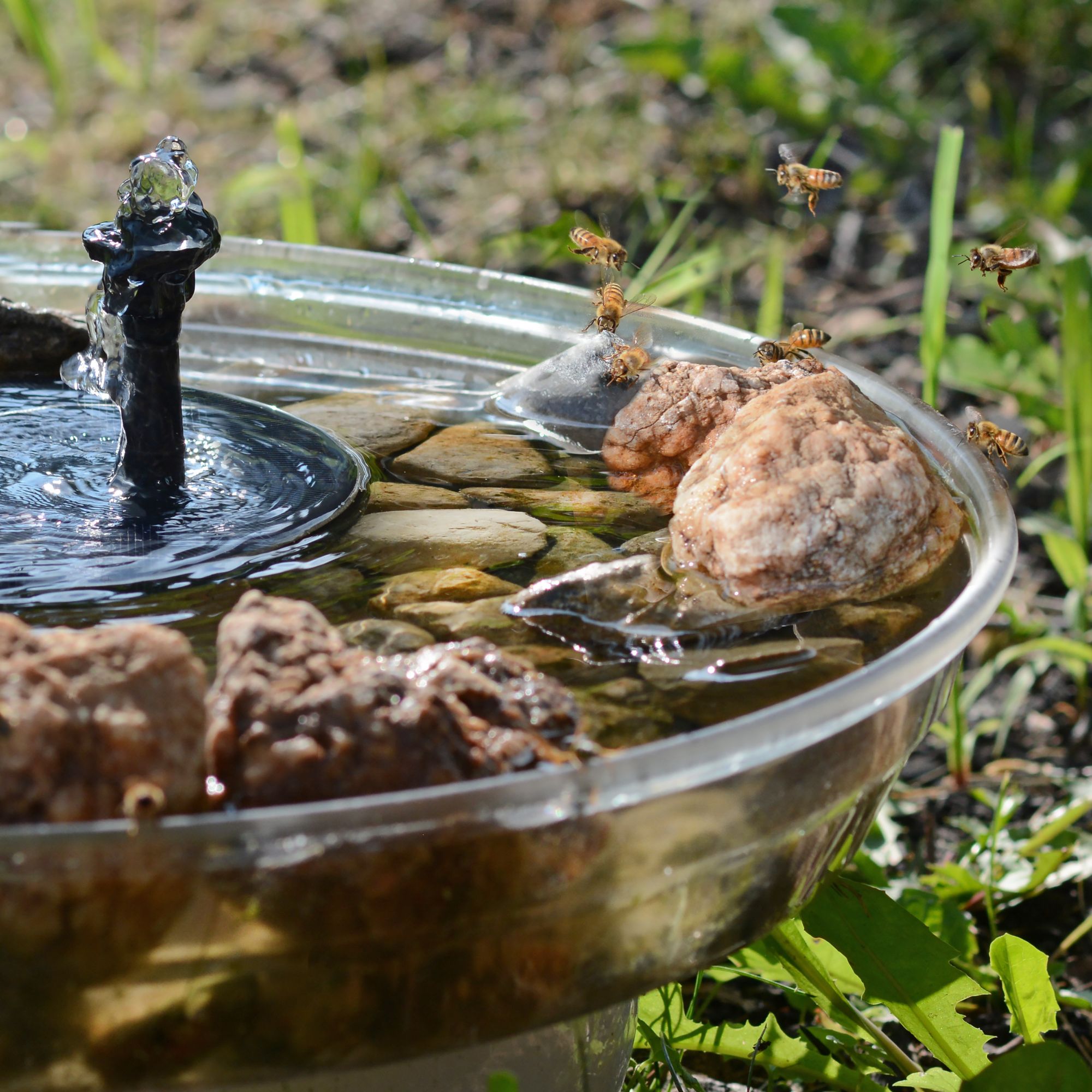
One of the biggest bird bath mistakes? Filling it too deeply. ‘Ideally, a bird bath should be wide and shallow, with a water depth of no more than 10 cm to allow each species to bathe at their preferred depth,’ says Helen Nyul, Group Head of Biodiversity at David Wilson Homes and the RSPB, who partner to increase biodiversity.
Sign up to our newsletter for style inspiration, real homes, project and garden advice and shopping know-how
‘You can also use stones and cobbles to form different water levels that will help birds and other creatures to safely get in and out of the water.’
That's right; filling your bird bath with stones and pebbles is a great way to include it among all your bee garden ideas, as busy pollinators often get thirsty, too! This ceramic bird bath from Amazon is the perfect depth for birds and other wildlife.
2. The bird bath is too slippery
Another bird bath mistake to avoid is installing one that’s made out of a very slick or slippery material.
‘The surrounding surface of the bath should be textured, so that birds can grip it with their claws and not slip,’ says Helen.
Something like this vintage-style bird bath from Amazon, £39.99, with a little perch included, is ideal for your garden's feathered visitors plus the bowl screws onto the stake and can be removed for easy cleaning.
Shop our favourite bird baths
3. The water hasn't been changed often enough
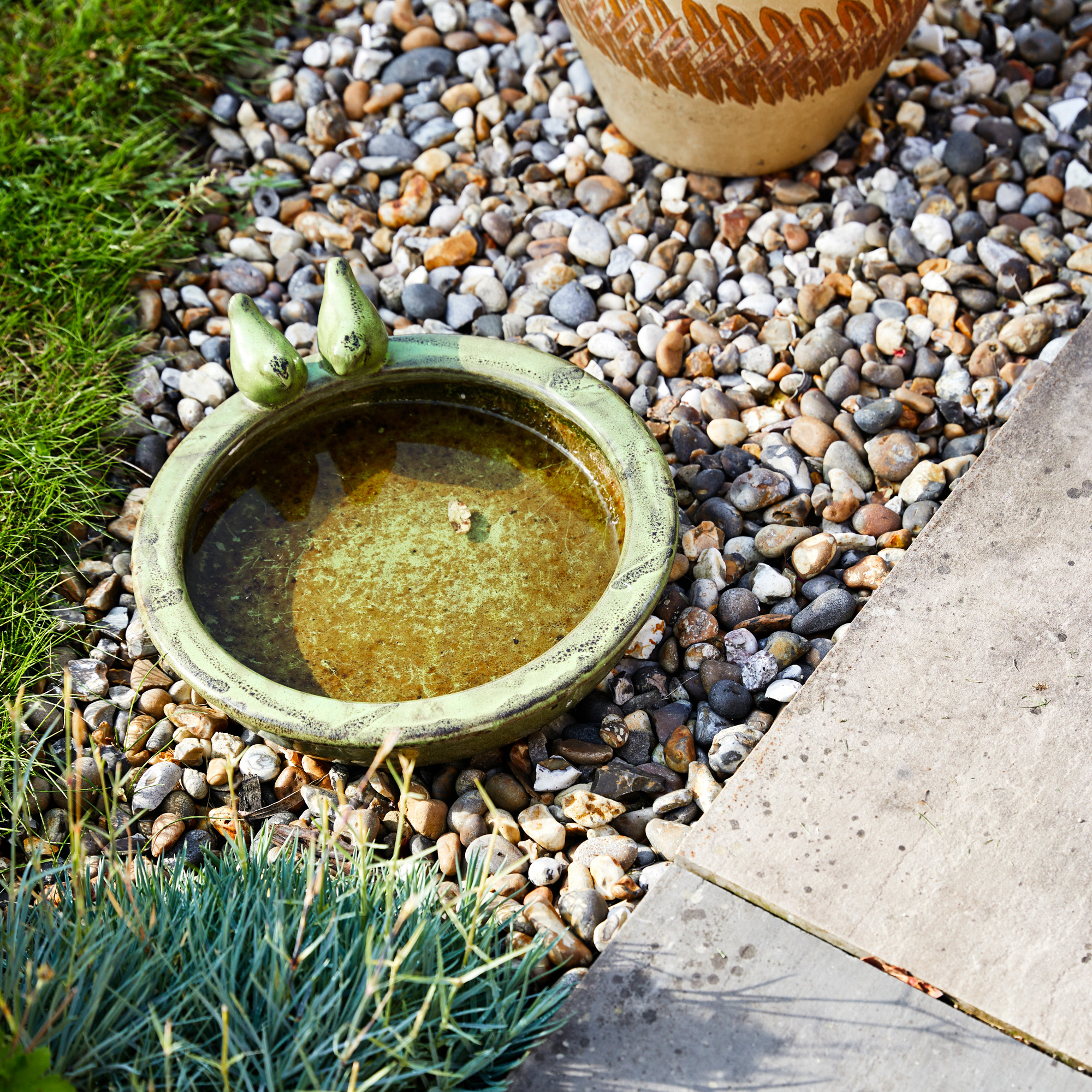
‘Bird baths can easily become dirty and even dangerous without regular cleaning,’ says Helen, who rates this as one of the easiest bird bath mistakes to make unwittingly.
Because of this, she says that ‘it is good practice to rinse it out every day to remove any build-up of bird droppings, dead leaves, and other debris, before refilling with clean water’.
4. It isn’t being cleaned properly
It’s official; not knowing how to clean a bird bath is high up on our list of bird bath mistakes.
‘Once a week, give the bath a thorough clean, scrubbing it well to remove any build-up of algae and other dirt,’ says Helen. ‘You can use diluted household disinfectants or cleaners specifically formulated for bird baths, but be careful to rinse the bath out to remove any traces of chemicals.’
Something like Ark-Klens Ready to Use (available from Amazon) is perfect for the job, and it's a product that comes recommended by the RSPB, too!
5. It’s in the wrong place

Just as you should know where to never position a bird box, the same is true of a bird bath. In fact, placing it in direct sunlight or without protection from predators could be one of the worst bird bath mistakes you might make.
‘Birds will only use it if they feel safe, so the placement of a bird bath is very important. Birds can become preoccupied with bathing, leaving them more vulnerable than at other times,’ explains Helen. ‘For this reason, birds will need to have clear visibility as they bathe to watch out for any predators, whilst also having nearby bushes or trees to provide cover and safety, if alarmed.’
Helen adds that it’s just as 'important to place a bird bath out of direct sunlight to prevent the water from becoming excessively hot and uncomfortable.'
‘This slows any evaporation during the hotter summer months, allowing the water to last longer, and it means algae will not grow as quickly in cooler water, so the bath will remain cleaner for longer,’ she finishes.
FAQs
Why put pennies in a birdbath?
If you're wondering why some people put pennies in a bird bath, the answer is simple enough: to keep the water cleaner and fresher for longer.
‘A great hack to slow the growth of algae is to add a few copper coins to your birdbath. It is not dangerous to birds,’ explains Helen Nyul, Group Head of Biodiversity at David Wilson Homes, and the RSPB.
'It is a tried-and-true method for lowering algae and keeping your bird bath cleaner for longer.’
Does bleach in bird baths harm birds?
While it’s much better to use an animal-safe disinfectant, a weak solution of domestic bleach can be used as an alternative if you need to clean your bird bath.
‘Try using one part bleach to nine parts water, to make sure it’s properly diluted, and take care to rinse it out several times with fresh water afterwards,’ suggests Christopher O’Donoghue, the director of Gardens Revived.
‘Make sure that you allow the bird bath to air dry fully before refilling it again – and remember that skipping any of these steps could cause some serious harm to your favourite garden birds.’
How do you stop a bird bath from freezing over?
If you're wondering how to stop a bird bath from freezing over, it's a good idea to brush up on some basic bird bath winter care tips.
Helen Nyul, Group Head of Biodiversity at David Wilson Homes, and the RSPB, says that birds will be even more dependent on water provided in gardens over the winter than the summer, since natural sources may be frozen.
‘To help prevent freezing, a light ball, such as a ping pong ball, can be placed in the water. This ball will slightly move around the container in the breeze, helping to keep a small surface area of water ice-free,’ she advises.
‘Never add any anti-freeze chemicals or salt to the water, as it can severely affect the insulating and waterproofing properties of the feathers and even prove toxic for the birds if digested.’
Now that you know the bird bath mistakes to avoid, you can head outside and get yours set up, ready for the summer and all your favourite feathered friends. Don't forget to set up a food source nearby, too!

Kayleigh Dray became Ideal Home’s Acting Content Editor in the spring of 2023, and is very excited to get to work. She joins the team after a decade-long career working as a journalist and editor across a number of leading lifestyle brands, both in-house and as a freelancer.
